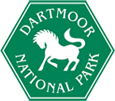Haymeadows
What are haymeadows?
A meadow is a field habitat vegetated by primarily grass and flowers (grassland). Haymeadows occur on well-drained soils and are managed by letting the grass grow into late summer, cutting in July after the flowers have set seed, and then grazing for a few weeks afterwards.
Meadows may be naturally occurring or artificially created from cleared shrub or woodland. They are open, sunny areas that attract and support flora and fauna that couldn't thrive in other conditions. They have lots of different wildflowers, such as black knapweed, ox-eye daisy, self-heal yellow-rattle, but the most notable plants are the orchids and these include the greater butterfly orchid, southern marsh orchid and heath spotted orchid.
Why are they important?
The flower-rich hay meadow is now a rare and important habitat. Nationally, we have lost 95% of our flower-rich meadows since the end of World War Two, mainly as a result of agricultural intensification and development. Because they have so many different species of flower, they support a range of wildlife, including bees. This makes them of utmost importance to insects like bees, pollination and hence the entire ecosystem.
Haymeadows are also important for different species of butterflies, such as small pearl-bordered fritillaries and marbled whites, grasshoppers, small mammals such as voles, and birds, including the rare cirl bunting.
Where can I see one on Dartmoor?
The best time to see haymeadows are during June and July as the bright and varied colours in these meadows are very attractive.
Not many haymeadows remain on Dartmoor – this has been as a result of neglect, inappropriate grazing and agricultural improvement including cultivation, reseeding and fertiliser use. The hay meadows that are best for wildlife are the product of traditional, low intensity farming.
However, there are some good examples of haymeadows, so look out for guided walks to show you around.
Discover more of the Dartmoor Story
- Find out more about how the Moor than meets the eye Landscape Partnership has supported haymeadows around the Postbridge area of Dartmoor.
- Join the Moor Meadows group to help conserve this important habitat


